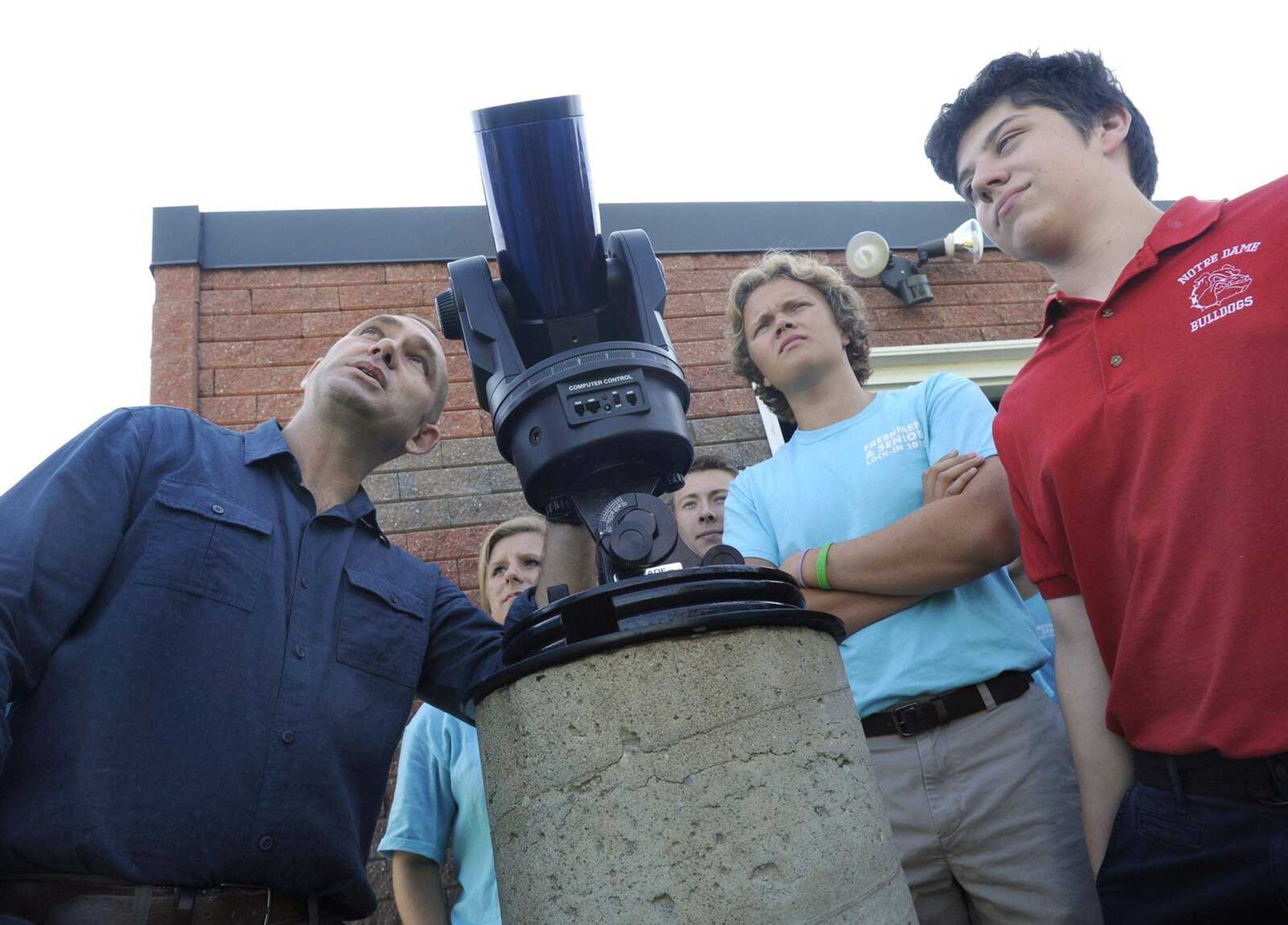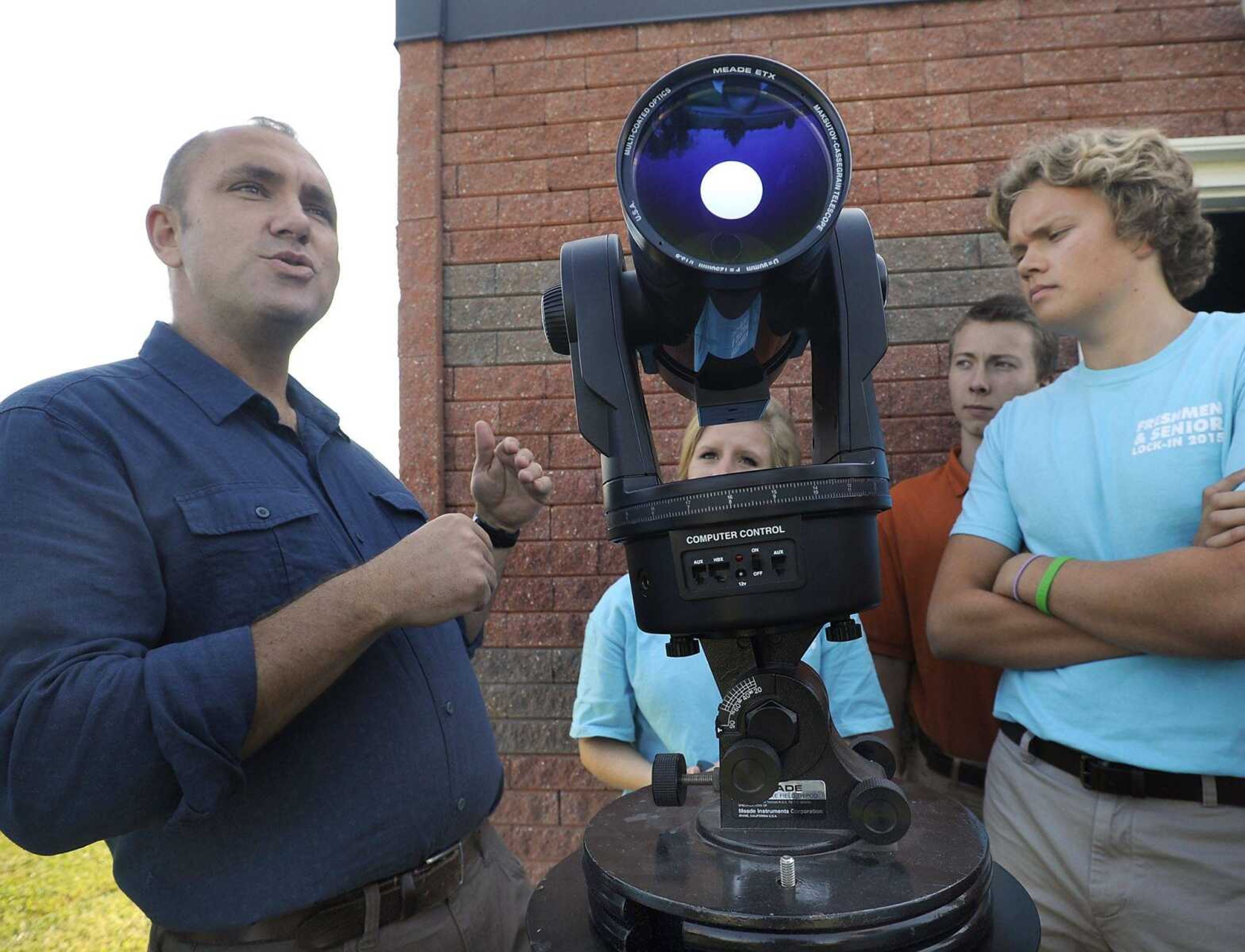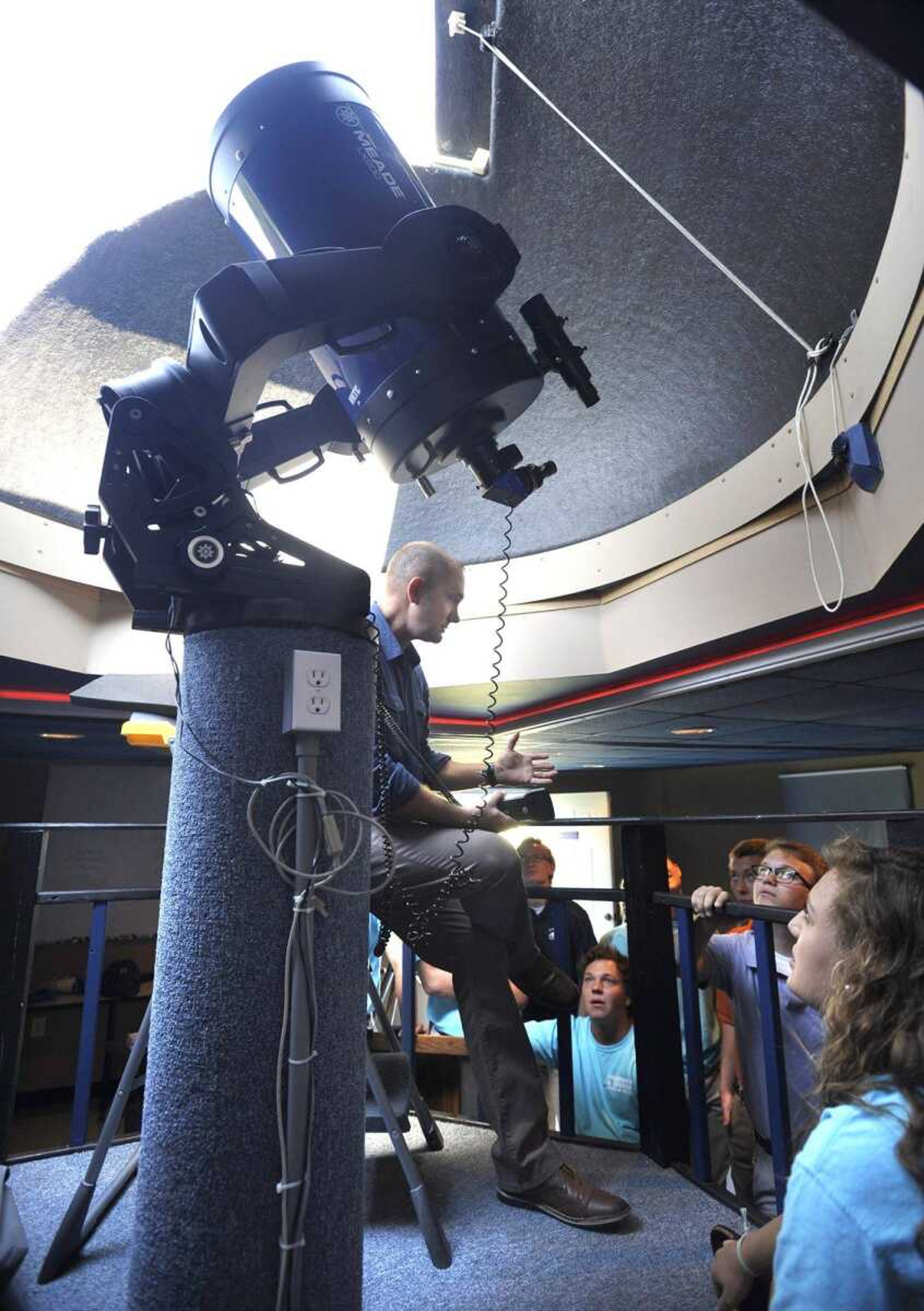Eyes on the sky: Notre Dame students see stars, planets and asteroids from their campus observatory
When it comes to stargazing, students at Notre Dame Regional High School have a definite leg up on their peers. In 2006, a 20-by-20-foot observatory, or "Glastetter Hall," was built behind the school to accommodate the need for storage and activity space for its recently acquired telescopes. Since its completion, a single-semester astronomy course was created and is offered to eligible seniors twice per school year...
When it comes to stargazing, students at Notre Dame Regional High School have a definite leg up on their peers.
In 2006, a 20-by-20-foot observatory, or "Glastetter Hall," was built behind the school to accommodate the need for storage and activity space for its recently acquired telescopes. Since its completion, a single-semester astronomy course was created and is offered to eligible seniors twice per school year.
Jerry Landewe, the school's astronomy teacher, said he was teaching an earth and space science class at the time of the observatory's construction, and before it was completed, he would bring students outside to lie on the sidewalk and view the stars.
Eventually, he saw a need for a space dedicated to the optical instruments. So Landewe, along with several other teachers in the science department and volunteers from the community, helped build the observatory and give the telescopes a home.
The majority of the telescopes Notre Dame students use are Schmidt Cassegrain telescopes, which consist of a combination of lenses and mirrors in a short, wide barrel. The high school also has a reflector telescope that uses only mirrors to produce magnified images of the stars.

With the help of digital programming on the telescopes, students are able to locate planets and stars with the touch of a button. Each of the telescopes has a handheld remote control and a built-in memory, making them accessible and easy to use for novices and pros alike.
Landewe said he uses other digital elements and applications to make observing the stars more fun for the students and keep them engaged.
He also uses a powerful laser pointer to point out elements in the sky while students are making observations at night.
"They [the applications] are almost taking my job, because they'll tell you exactly what's there, and you can zoom in on them [the constellations] so easily," Landewe said with a laugh. "But there's nothing like the real deal and looking at it through an old-school telescope."
He instructs his students to conduct projects in which they observe the sky not only with their naked eyes, but also with the technology on hand.

"I like to just get kids to know what's up and to know what is out there, because they don't get a lot of it. And this kind of reinforces what they do get and expands on that," he said.
Landewe requires his students to visit the observatory several times during the semester to view changes in the sky over time.
"There's always something to learn; you learn something all the time. And the sky changes all the time; it's never the same each night," he said.
He said people often have misconceptions or preconceived notions about astronomy.
"This helps get rid of some of those," Landewe said. "They figure out their real place in the solar system and beyond, and they learn how immense it really is, and what's capable, what a little telescope is capable of and what a big telescope is. The kids just get so excited. I even have parents, that when they see Saturn or something like that, they just [say], you know, 'Oh, cool!' That's the reward right there -- when you hear that, because a lot of them, they've never seen it. [To them] it looks artificial."
Evan Unterreiner, a senior at the high school, said he values the opportunity to study astronomy and is excited to work in the observatory throughout the semester.
"It's something I don't really get to do every day at Notre Dame," he said. "I've never used this observatory once, and I really wanted to use it for this class."
Landewe said he enjoys organizing special events with his students and helping them learn about the excitement outer space has to offer.
Unterreiner said he is most looking forward to evenings when the class will come to the high school and observe the stars.
The students will have their first evening observation tonight and will have the opportunity to observe the night sky as a group.
Last year an addition was made to the observatory collection: a Daystar Filter, which allows students to observe the sun directly during the day.
The observatory is open to the public for scheduled tours, and several groups of scouts and grade school classes come to visit every year.
Landewe said he encourages students and members of the community to take advantage of the unique resources available for use at the high school and to take the time simply to look at "what's up."
Connect with the Southeast Missourian Newsroom:
For corrections to this story or other insights for the editor, click here. To submit a letter to the editor, click here. To learn about the Southeast Missourian’s AI Policy, click here.










